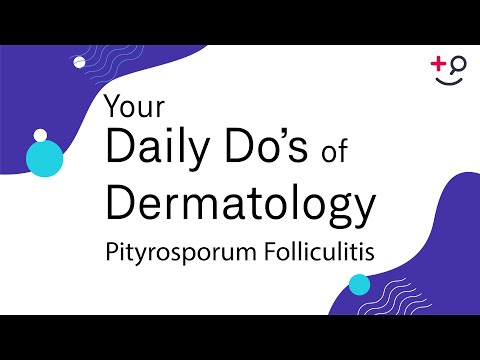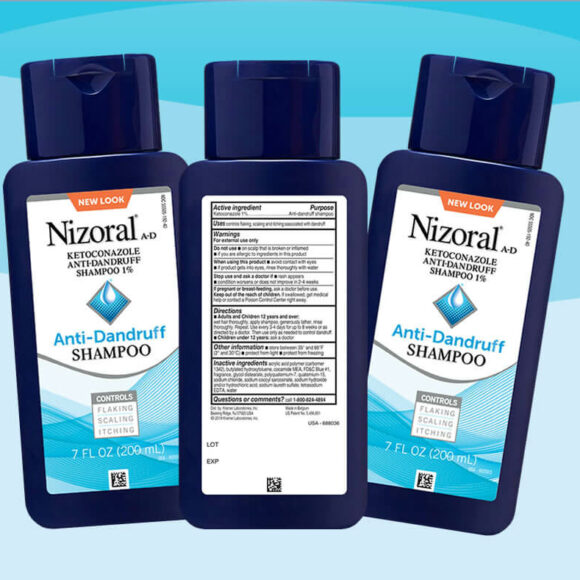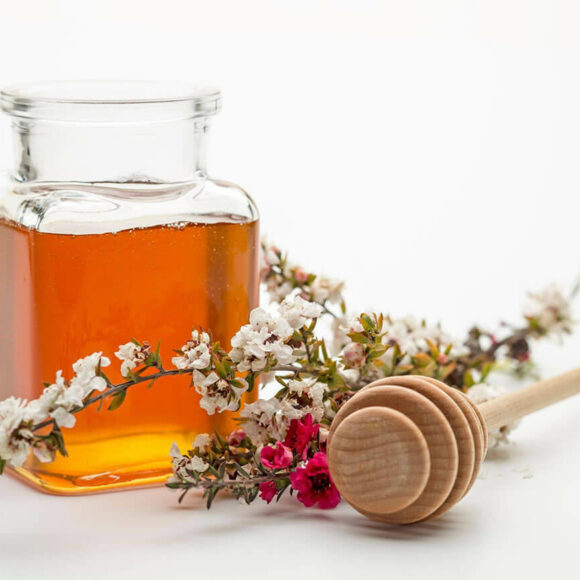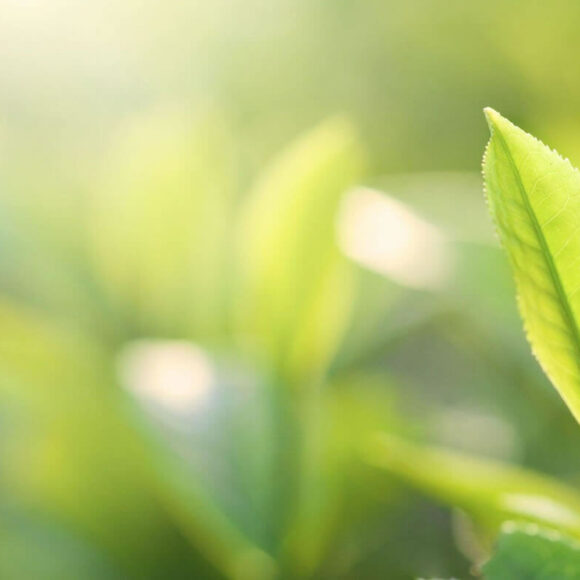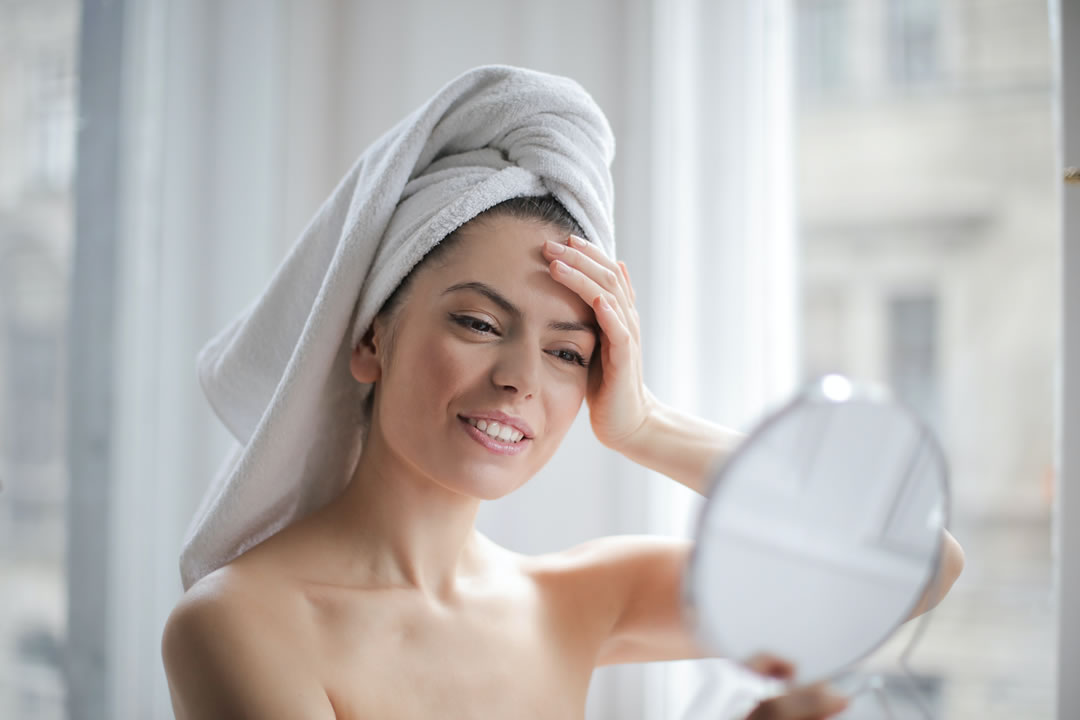
Table Of Contents
- 1 What Is Fungal Acne?
- 2 What Does Fungal Acne Look Like?
- 3 Understanding Fungal Acne on the Forehead: Causes and Symptoms
- 4 How is Fungal Acne Diagnosed?
- 5 How to Get Rid of Fungal acne on your Forehead
- 6 Commons Treatment for Fungal Acne on the Forehead
- 7 How Long Before You See Clearer Skin?
- 8 When to See a Dermatologist
- 9 Conclusion
Although fungal acne on the forehead is possible, most forehead bumps may simply be acne vulgaris caused by bacteria and dead skin cells or comedogenic hair care products.
In this article, we’ll look at how to deal with both; read on.
What Is Fungal Acne?
While not scientifically accurate, “fungal acne” is a widely used and suitable term for a fungal infection of the skin known to dermatologists as Malassezia folliculitis. However, historically speaking, Malassezia folliculitis was known as Pityrosporum folliculitis.
On the surface, Malassezia folliculitis (MF) looks like acne vulgaris, which can be misleading because it is not your “typical acne.”
It’s an acne-like eruption within the hair follicles of the skin caused by an increase in the presence of yeast (Malassezia).
Healthy mammals naturally have Malassezia on their skin. However, when certain underlying health factors are present, these microorganisms can multiply uncontrollably, creating an environment that allows this opportunistic yeast to thrive. This can lead to the development of fungal infections like fungal acne.
Rash-like fungal acne breakouts on the back, neck, arms, and shoulders are common symptoms of this type of yeast infection. However, fungus acne can also affect other parts of the body, such as the face (forehead, T-zone, etc.).
Due to visual similarities, fungal acne can be misdiagnosed as acne vulgaris.
A more detailed explanation of what fungal acne is and available fungal acne treatments can be viewed in our article detailing everything you need to know about this skin condition.
To help us gain further insights from a board-certified dermatologist perspective, you may watch the video below to see how they diagnose and treat fungal acne.
.
What Does Fungal Acne Look Like?
Malassezia folliculitis appears in clusters of tiny pimples uniform in shape and size. There are no blackheads with this fungus-related acne.
A fungal acne breakout mainly consists of tiny pus-filled lesions. This is different from traditional acne, which tends to be more random in location, shape, and size and consists of both white and blackheads.
Malassezia folliculitis results in the appearance of papules and pustules that are accompanied by itching. Itching is another thing not common with traditional acne breakouts.
These follicular papules and pustules are often found on the upper back, chest, and shoulders. A 2014 study published in The Journal of Clinical and Aesthetic Dermatology found that 57.1 percent of the outbreak occurs on the face. They are just not noticed as often there because people think they are regular acne.
Fungal acne can affect the chin and cheeks, and although it’s not as common on the forehead, it is possible to see the papules and pustules there, but often outbreaks on the forehead are normal acne.
Understanding Fungal Acne on the Forehead: Causes and Symptoms
More often than not, the majority of forehead acne is caused by dead skin cells clogging pores or acne-causing hair care products plugging up your hair follicles.
Excess sebum secreted by the scalp, on the other hand, could play a role in the overgrowth of Malassezia, the fungus that causes dandruff.
This is why a combination of fungal and bacterial therapy may be the best option; see our recommended treatment options below.
As seen with fungal acne, itching is a telltale sign of a yeast infection. If the acne on your forehead is itchy, it’s probably Malassezia folliculitis rather than acne vulgaris.
Common Causes of Fungal Acne
- Fungal acne develops when there is too much yeast on the skin. The yeast overgrowth can occur for different reasons. For example, fungal acne will grow in moist areas. When moisture becomes trapped, it creates an environment that yeast love. This can happen anywhere on the skin, such as on the upper back, chest, or shoulders, but not the palms of the hands or the soles of the feet, where no hair follicles are present. On the forehead, it could be caused by frequent sweating, especially sweating from the head down to the forehead.
- Antibiotics can also cause yeast overgrowth. Antibiotics kill bacteria on the skin, which helps to keep the yeast population under control. If the levels of your beneficial bacteria are low, it can lead to an overgrowth of yeast which can trigger various skin issues.
- Certain diseases and treatments can wreak havoc on the immune system, allowing yeast to flourish. AIDS patients and chemotherapy patients, for example, may develop yeast acne on their foreheads.
- It is important to note that fungal acne may be more common in adolescents, most likely due to increased sebaceous gland activity and a lot more sebum for the yeast to feed on. Furthermore, teens have a tendency to overuse harsh or active chemicals in an attempt to “quick-fix” prevalent acne. This overindulgence, however, frequently results in a dysfunctional epidermal skin barrier, which can lead to the development of both fungal and bacterial acne.
- Having an oily scalp or hair is another possible cause of forehead pimples. This is especially likely in warmer climates, where this oil, along with sweat, can be deposited on the forehead.
How is Fungal Acne Diagnosed?
Dermatologists often diagnose fungal acne through a visual examination of the affected area. In some cases, a skin scraping or biopsy may be necessary to confirm the presence of an overgrowth of yeast and rule out other skin conditions.
How to Get Rid of Fungal acne on your Forehead
The same product that people use to treat regular acne won’t kill the yeast that causes the fungal acne on your forehead. It’s important to avoid this common mistake as it’s not the correct way to get fungal acne treated.
People with fungal folliculitis tend to have it for a long time because they mistake it for regular acne and do not treat it appropriately.
The goal of an excellent fungal acne routine is to keep the yeast under control. The infection must be stopped by restoring the balance of bacteria and yeast on the skin.
This is accomplished through the use of a variety of fungal acne products and lifestyle changes.
Disclosure: This article contains affiliate links, which means we may receive a tiny commission if you purchase something through them.
Commons Treatment for Fungal Acne on the Forehead
A combination of effective cleansing, medicinal treatments, and lifestyle changes may be what you need to clear fungal acne.
Regular Cleansing
Showers are significant if you tend to sweat a lot or work out regularly. It helps in two ways: By washing your skin, you remove dead skin cells, yeast cells, and sweat compounds that can create an environment for yeast to grow.
You might try a combined treatment for both fungal acne and acne vulgaris. This will ensure you tackle all the potential causes of the yeast acne outbreak.
Use products such as Nizoral or Selsun Blue for fungal acne to cleanse the area. These are anti-fungal shampoos used to treat dandruff, which is also linked to Malassezia.
You can use these antifungal washes on the forehead at least once a day for an active breakout and then one to two times a week when the infection clears up. Let them sit on the skin for 3-5 minutes before rinsing.
Forehead Fungal Acne Products
Other anti-fungal agents can also help. These include products that contain Ketoconazole, Pyrithione Zinc, or Selenium Sulfide.
Salicylic acid is an anti-inflammatory, keratolytic agent typically used to treat acne vulgaris. It can dissolve dead yeast cells from the forehead and slow yeast growth. This may negate the need for continued topical antifungals after your skin has cleared.
While salicylic acid has been shown to be effective in the treatment of acne, there is no clinical evidence to back up the use of treatment for fungal acne.
Sulfur is a natural element and an essential component for all organic organisms. It can be an effective option in the battle against fungus acne on the forehead.
Sulfur is also a keratolytic agent, removing dead skin cells and naturally helping to unclog pores.
Sulfur can also absorb excess skin oil (sebum), which can result in a reduced fungal growth rate.
Sulfur is also a mild antifungal that may slow the growth rate of Malassezia on the forehead. If the scent doesn’t bother you too much, definitely give sulfur a try!
Caprylic Acid can be a powerful antifungal when used correctly.
Look for Pure C8 Caprylic Acid M.C.T. (Medium Chain Triglycerides). C10 MCT is less effective, and C12 MCT will make fungal acne worse.
This fungal acne safe oil can be mixed in with your moisturizer or used as an oil cleanser to remove sunscreen and makeup. It can also be applied directly to get rid of fungal acne on the forehead.
Top Natural Home Remedies that Treat Fungal Acne on the Forehead
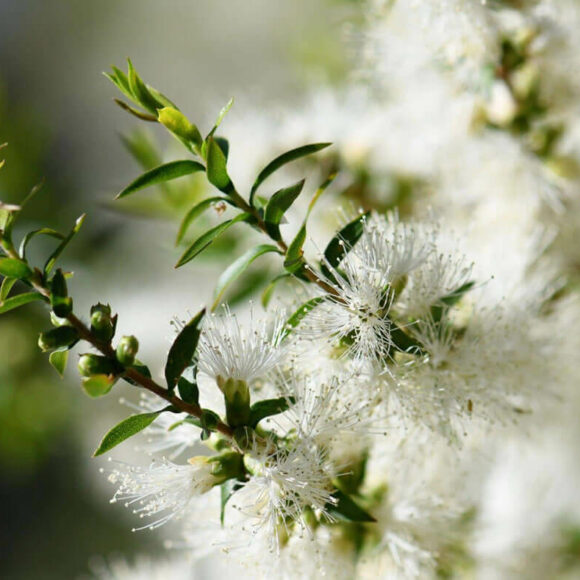
Tea tree oil is a natural antifungal and fungal acne treatment that should only be used topically. Look for Tea Tree Oil (Melaleuca Alternifolia). In addition, Tea Tree Oil can be very irritating, so it needs to be diluted to at least 1% concentration or less to avoid skin irritation.
To enhance the antifungal properties, consider diluting with M.C.T. Oil. This can serve as a maintenance measure to prevent fungal acne and keep further breakouts at bay.
Honey, in general, is considered to have antifungal properties. A 2001 study published in the European Journal of Medical Research found that Manuka Honey is an effective treatment for seborrheic dermatitis, a skin condition that is similar to fungal acne and is also caused by Malassezia yeast.
The study recommended treating the affected area with raw honey applied three times per day for at least three hours for two weeks.
Raw honey can be a sticky option, though, so you can also look for products that contain it or propolis, bee glue, for the same effect. You can also try this Tea Tree and Honey Mask for a dual-action approach.
Green Tea has been used medicinally in East Asia for centuries. It has a natural antimicrobial effect that makes it a practical option, even for fungal acne on the forehead. Apply pure green tea extract to the forehead. 5% extract is required for efficacy.
One of the best treatment options available will cost you nothing. The UV radiation from the sun kills most microbes, including yeast. The sun is also your most important vitamin D source, which helps modulate immune function on the outer layers of the skin.
Limit your exposure to 10 to 30 minutes, though, a few times a week, especially if you have light-colored skin.
Following a Fungal Acne Diet May Reduce Forehead Fungal Acne
A fungal acne diet is really just a diet designed to help prevent yeast overgrowth. Diet can play a factor in controlling yeast because they tend to feed on carbohydrates and refined sweets. If you take the bulk of those foods out of your meal plan, you may see improvement not only in your skin but in your digestive health as well.
What to Avoid so you Don’t Make Fungal Acne Worse
Yeast feeds on oils, which is why it is attracted to hair follicles. They produce the oil that helps to keep skin supple. Unfortunately, many skincare products contain oil that can lead to yeast overgrowth. Check the labels of all the cosmetic and skincare products you use.
If you see ingredients such as oleic, stearic, palmitic, lauric, and myristic acid, then you should avoid them.
Also, avoid products that contain fatty acid esters with carbon chain lengths of 11-24. Look for ingredients that end in ATE, such as isopropyl palmitate or glyceryl stearate.
You can use our handy skincare ingredient checker to help simplify the entire ingredient-checking process.
ProTip:
The skin of each individual is unique. It’s crucial to keep track of your flare-ups to see if there are any specific triggers, such as the weather, foods, or clothing you’re wearing.
If you have chronic fungal acne, keep a journal and write down anything that could be a trigger whenever you break out.
Consider what you ate that week, what cosmetics or hygiene products you used, and anything else in your life that might have changed.
How Long Before You See Clearer Skin?
It is essential to give enough time for the medication to work since Malassezia yeast has a thick and multilayered cell wall, which means it cannot be cleared up overnight.
By week 2 of topical anti-fungal therapy, you should see a marked reduction in Malassezia folliculitis lesions on your forehead.
The most effective treatment is going to be oral antifungal medication and topical antifungal creams. However, oral antifungal medications can have adverse effects, including nausea, vomiting, diarrhea, abdominal pain, and hepatotoxicity.
An important note about fungal acne and oral antibiotics
Take caution when using antibiotics if you know you have fungal acne. Antibiotic medications can alter the normal cutaneous flora and can trigger even more yeast overgrowth.
With each infection, take note of what works and what doesn’t. Eventually, you’ll know exactly what to do if you see a breakout starting and can take action to avoid it.
When to See a Dermatologist
As mentioned earlier, Malassezia folliculitis is commonly misdiagnosed as acne vulgaris but also may be confused with bacterial folliculitis. If attempts to get rid of fungal acne on your forehead at home are not effective, or it seems like things are getting worse, make an appointment with a dermatologist in your area.
How do dermatologists diagnose fungal acne?
They will do a microscopic evaluation of matter extracted from the affected area for the presence of Malassezia yeast. Additionally, If yeast is present on your forehead, a wood’s lamp can be used to illuminate the lesions, which will glow yellow-green if yeast is present.
Conclusion
To conclude, it is essential to understand that finding the ideal product for treating fungal acne on your forehead may require some experimentation. This is because what may work for someone else’s skin may not yield the same results or be as effective for your skin.
Visually speaking, there is no clear line between fungal acne and acne vulgaris. You could have both happening on your forehead. For that reason, consider a dual treatment approach. Treat both conditions and see if you get positive results.
Ultimately, It is advisable to consult a certified dermatologist to accurately diagnose and treat the specific type of acne that is affecting your forehead.
Discover more information about Malassezia folliculitis and learn how to deal with it by visiting Folliculitis Scout. We offer information and support to people dealing with itchy forehead acne.
Join the Folliculitis Scout Community
Above all, know that you aren’t alone in your fungal acne problems. There’s a whole community of people with this issue that are ready to share their tips and tricks for treating the problem. We love our community at Folliculitis Scout! Socialize with us as well on Facebook. It’s so easy to Join and become part of a community that truly supports each other through the journey to better skin.
- Malassezia (Pityrosporum) Folliculitis – J Clin Aesthet Dermatol – 2014 Mar; 7(3): 37–41.
- American Journal of Clinical Dermatology volume 20, Pages 335–344 (2019)
- Three etiologic facets of dandruff and seborrheic dermatitis: Malassezia fungi, sebaceous lipids, and individual sensitivity. J. Investig. Dermatol. Symp. Proc. DeAngelis Y, Gemmer C, Kaczvinsky J, Kenneally D, Schwartz J, Dawson T. 2005.
- Malassezia and the Skin, Science and Clinical Practice Boekhout, T., Guého-Kellermann, E., Mayser, P., Velegraki, A. (Eds.)
- A study of the fatty acid metabolism of the yeast Pityrosporum ovale. Wilde, P. F., and P. S. Stewart. 1968. Biochem. J.
- J Clin Aesthet Dermatol. 2014 Mar; 7(3): 37–41

